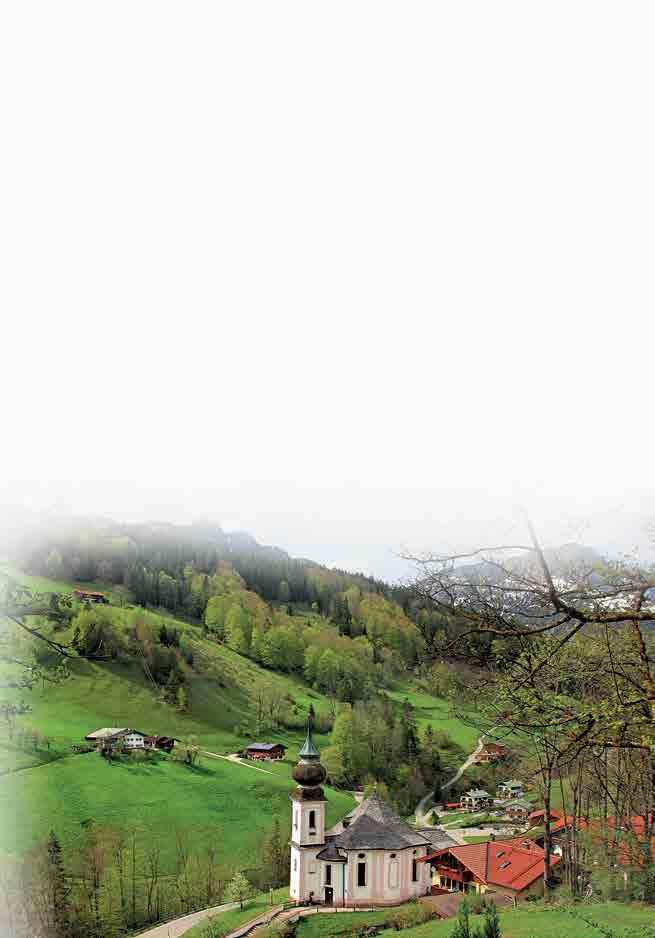
4 minute read
Pivoting toward regenerative tourism
PIVOTING TOWARD
REGENERATIVE TOURISM
As environmental issues continue to dominate the news, hospitality professional Chirine Salha talks about the impact on tourism and why more travelers than ever before are gravitating toward cleaner and greener trips.
It goes without saying that no one wants to travel to polluted places, yet everywhere we go, we witness the damage we leave on the environment. Overtourism
Landmarks and places of interest have experienced firsthand how overtourism can considerably harm a destination’s ecology. The situation can become so disastrous that some places have ended up banning tourism, such as the Thai island Koh Tachai that was closed to tourists to safeguard its biodiversity. Another example of overtoursim is Mount Everest, where tourism results in large amounts of waste in an area with few waste management facilities. Furthermore, Venice banned large cruise ships, while Macchu Picchu introduced a ticketing system to control the number of visitors.
To combat overtourism, we are witnessing the development of undertourism and off-season tourism. Travel companies are focusing on creating bespoke trips during the low season, resulting in hosting communities having consistent, year-round income. They are also pushing travelers out of the most sought-after regions into undiscovered territories, reviving other parts of the country. Increased awareness of the negative impact of tourism has led many travelers to change their behavior and do their bit to save the planet, even if they are on holiday. Sustainable travel
Capitalizing on the increasing global consumer consciousness of wellness, sustainable tourism has been gaining traction for a while now. Such is its potential that the United Nations General Assembly declared 2017 the Year for Sustainable Tourism for Development, marking the start of an ambitious longterm agenda to shape a more responsible and socially conscious tourism sector. It is clear that a greater number of people wish to travel “green.” Booking.com’s 2019 travel report stated stated that 73 percent of travelers wanted to stay in eco-sustainable hotels in 2019, up from 62 percent in 2016, with 74 percent aged between 45 and 55, and 71 percent in the millennial category. Greenwashing leading to regenerative travel
However, there is so much more sustainability than just the standard greenwashing claims and statements or the focus on green certifications, which have multiplied in the last decade. The next step to the sustainable travel journey is its upgraded version — that of the regenerative travel. Regenerative tourism is not just about minimizing footprint; it about being proactive and intentional in contributing something positive to a destination, leaving it in a better condition than how the traveler found it.
How can we positively impact the places we visit?
The experience between the host and the guest is the essence of tourism. So, the first aspect is to view tourism as a living system where all stakeholders — travelers, travel companies, the community, the workforce and the future generation — are interconnected and interdependent, with a shared responsibility to help the destination flourish. This leads to solid collaborative efforts between all parties and the constant involvement of the local community to highlight the uniqueness of the place. By placing the community at the heart of tourism, we are securing the support of the best guardians to protect the cultural heritage, traditions, biodiversity, ecosystems and ethnicity of the destination.
What activities are included in regenerative tourism?
Slow travel and experiential tourism are the new watchwords in tourism. The idea of lingering for an extended period in one place, as opposed to hopping from one city to the other, is becoming more and more attractive post Covid-19. Furthermore, with less transportation implied in slow travel, carbon emissions are significantly reduced. Travelers are also less concerned about luxurious stays and more focused on being offered extraordinary, exclusive and stress-free access to unique experiences that add value to their lives and to their community. Experiential tourism continues to assert itself and is destined to become an important trend in sustainable tourism, where immersive experiences have much higher value than material consumption.
Regenerative tourism embraces the act of volunteering, such as cleaning beaches and forests, regenerating rural landscapest, educational tours that embrace nature and culture, sustainable farming and rehabilitation techniques, compost making, tree planting and much more. The act of volunteering also extends to restoring and rebuilding authentic old places, such as the Alberghi Diffusi in Italy, a hospitality effort aimed at restoring abandoned houses in villages for the purpose of tourism.

Co-living and co-working opportunities
The trend of co-living and co-working has been most apparent post Covid-19. There is a newfound freedom in choosing where you work, and this has led many destinations to tempt remote workers to stay for extended periods of time and combine work and leisure. These destinations are being labeled digital nomad villages, a trend that is evident on the island of Madeira in Portugal. There, freelancers can enjoy the beautiful, sun-drenched destination for a period of one to six months and take advantage of its incredible landscape and culture, with free coworking spaces, fast Wi-Fi connection, an assigned local host who will help them get acclimated and create a deep connection with the community. Challenges
Regenerative tourism is a concept that shows care for the regeneration of habitats and species, a concept that is not just limited to "not damaging" the environment and that seeks to actively revitalize and regenerate it, resulting in a constructive influence on local communities and economies.
While there is more will to embrace and foster such changes in responsible and regenerative tourism, some difficulties are still experienced by travelers, including lack of information on how a traveler can make their vacation more sustainable, as well as trustworthy and universal labeling. While it remains to be seen what the future holds, we can be sure that it’s an interesting trend to follow.










